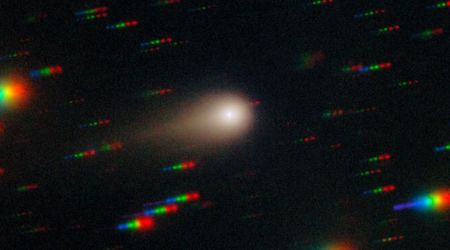NASA and SpaceX prepare for a late July to early August liftoff of Crew-11 mission from Kennedy Space Center

NASA and SpaceX are gearing up for the Crew-11 mission slated for launch in late July or early August from Launch Complex 39A at Kennedy Space Center, according to NASA's Johnson Space Center on X. This will be the eleventh crew rotation flight to the International Space Station (ISS) under NASA's Commercial Crew Program. Notably, it marks the twelfth time a SpaceX vehicle will transport astronauts into space, a figure that includes the Demo-2 test flight, per NASA.
Pre-launch mood 🚀@NASA’s @SpaceX #Crew11 is targeted to launch in the late July/early August timeframe from Launch Complex 39A at @NASAKennedy in Florida.
— NASA's Johnson Space Center (@NASA_Johnson) July 1, 2025
Media accreditation: https://t.co/kNszRjIG3t pic.twitter.com/JSvuAy94TJ
This upcoming expedition will feature four international crew members, representing three different space agencies, who will embark on a long-duration science mission aboard the orbiting laboratory. The Crew-11 manifest includes NASA astronauts Commander Zena Cardman and Pilot Mike Fincke, JAXA (Japan Aerospace Exploration Agency) astronaut Kimiya Yui, and Roscosmos cosmonaut Oleg Platonov, as mentioned on NASA's official site.
Our next crew to the @Space_Station is scheduled to lift off from @NASAKennedy later this summer!
— NASA (@NASA) July 2, 2025
Media accreditation is now open for the launch of NASA's @SpaceX #Crew11 mission: https://t.co/CtuteVtdEb pic.twitter.com/W6kpMVyCKL
The primary objectives of the Crew-11 mission are to conduct crucial scientific investigations and demonstrate advanced technologies. These experiments are not only vital for preparing humanity for future missions to the Moon and eventually Mars, but also promise to yield benefits for those on Earth. Interestingly, both Commander Cardman and Pilot Fincke were reassigned to Crew-11. Cardman was originally part of NASA's SpaceX Crew-9 mission, while Fincke was slated for NASA's Boeing Starliner-1 mission. These reassigments were made by NASA to support the overall planned activities aboard the International Space Station. Cardman brings valuable experience from her training as a commander on the Dragon spacecraft, while Fincke contributes extensive long-duration spaceflight expertise to the crew complement.

Zena Cardman, selected as a NASA astronaut in 2017, will be making her first journey into space. Hailing from Williamsburg, Virginia, Cardman holds degrees in Biology and Marine Sciences from the University of North Carolina at Chapel Hill, with research focused on subsurface environments. Since completing her initial training, she's been actively involved in real-time station operations and planning for lunar surface exploration. Mike Fincke is set for his fourth trip to the space station, bringing with him an impressive 382 days in space and nine spacewalks across previous expeditions. A retired US Air Force colonel. Fincke has played a significant role in advancing the development and testing of both SpaceX Dragon and Boeing Starliner spacecraft within NASA's Commercial Crew Program. He boasts multiple degrees from the Massachusetts Institute of Technology and Stanford University.

Kimiya Yui, a JAXA astronaut selected in 2009, will be undertaking his second trip to the space station, having previously logged 142 days in orbit. He has experience as a flight engineer and has held leadership positions within the JAXA Astronauts Group, as well as serving in Japan's Air Self-Defense Force. Finally, the Crew-11 mission will mark Oleg Platonov's first spaceflight. Selected as a cosmonaut in 2018, Platonov holds degrees in Engineering and State and Municipal Management. His extensive pre-flight training includes aircraft piloting, zero-gravity exercises, scuba diving, and wilderness survival.
For over two decades, the International Space Station has been continuously inhabited, serving as an invaluable platform for advancing scientific knowledge and demonstrating new technologies. It facilitates research breakthroughs that are not possible on Earth. The station remains a critical testbed for NASA, enabling the agency to understand and overcome the challenges of long-duration spaceflight and to expand commercial opportunities in low Earth orbit. As commercial companies increasingly focus on providing human space transportation services and destinations, NASA's Artemis campaign is well underway, aiming to return humans to the Moon as a stepping stone for future human exploration of Mars.









